As I’m sure everyone has noticed, there’s been something of a change in mountain bike geometry in the last few years. The longer-lower-slacker trend has become de rigueur, and aside from the fact that some bikes these days resemble a devil’s cross between a farm gate and a 1970s Chopper (remember them?), pretty much everyone from frame designers to weekend warriors will tell you that it’s faster, easier and more fun on one of these revolutionary new fangled bikes. So why then on this XC bike with a short top tube, high bottom bracket, a steep(ish) head angle and a long stem have I been smashing long standing downhill PRs which were set on a supposedly ‘more suitable’ bike? Either I’ve recently turned into a riding god, or there’s more to this bike geometry lark than meets the eye.
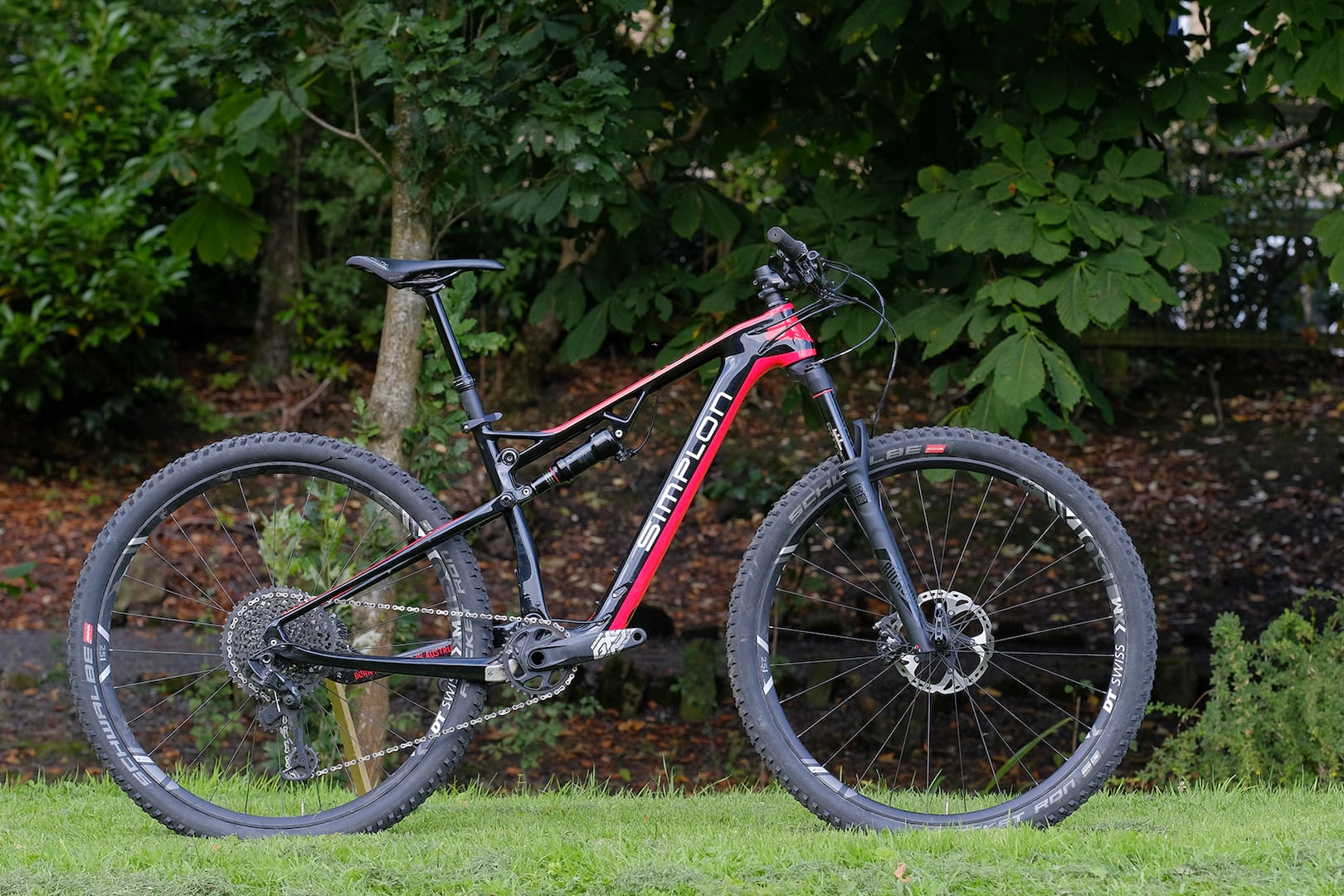
The Cirex 120 is the full suspension XC offering from long established Austrian outfit Simplon. Long established (since 1961) they may be but as many who saw this bike out on the trails did, you’d be forgiven for asking ‘who are they then?’. That’s because until last year when they moved into the British market, Simplon only sold bikes in Austria, Germany and Switzerland. A result, apparently, of no one in the family run firm being either able or confident in speaking English. Some new investors and English language lessons all-round changed that policy, but whether they regret this new venture into the British market following the wise and informed decision of the Great British Public to go it alone I don’t know. With bikes like this, 50 years of experience, and an output across their range of 12,000 bikes per year I doubt they have anything to fear.
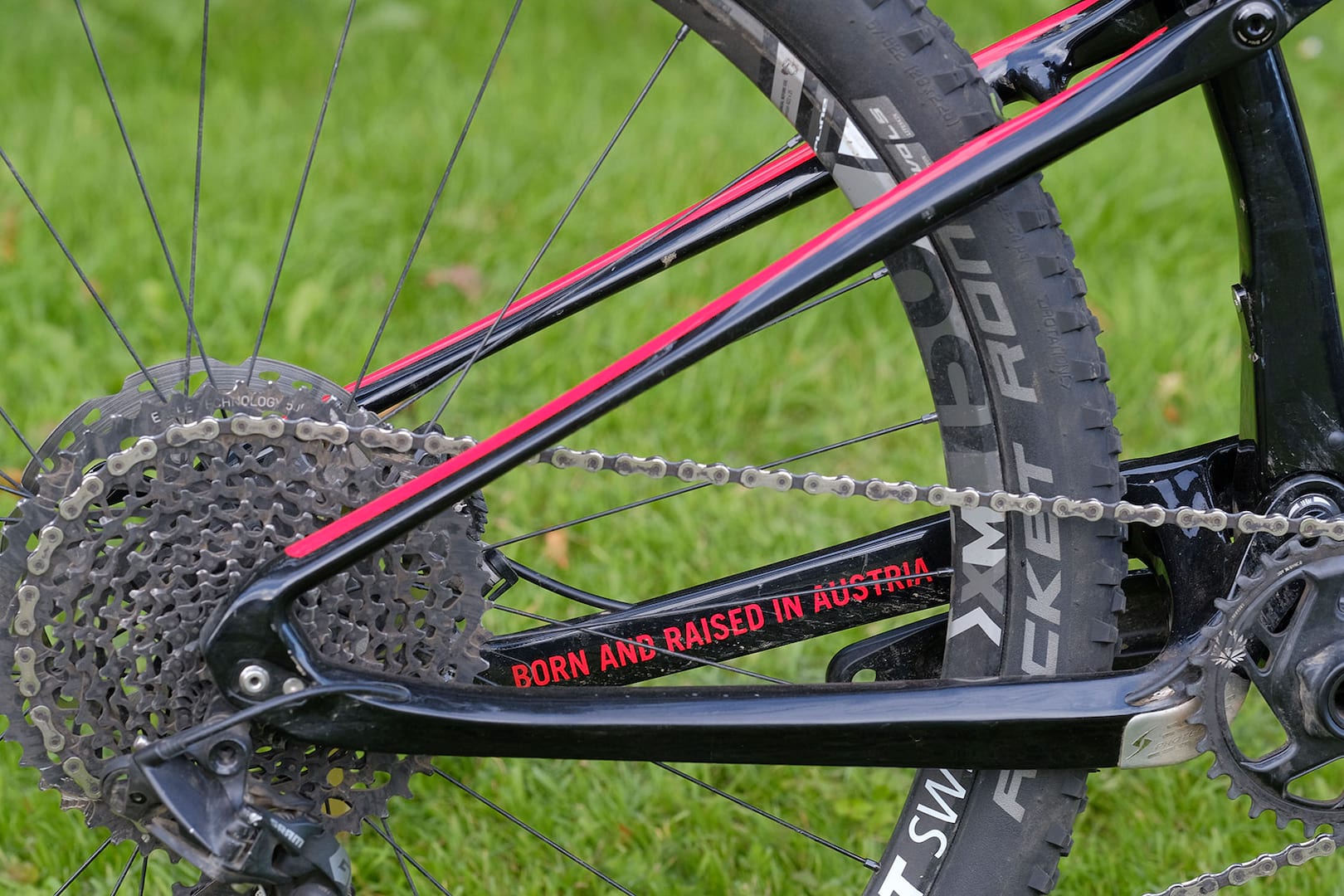
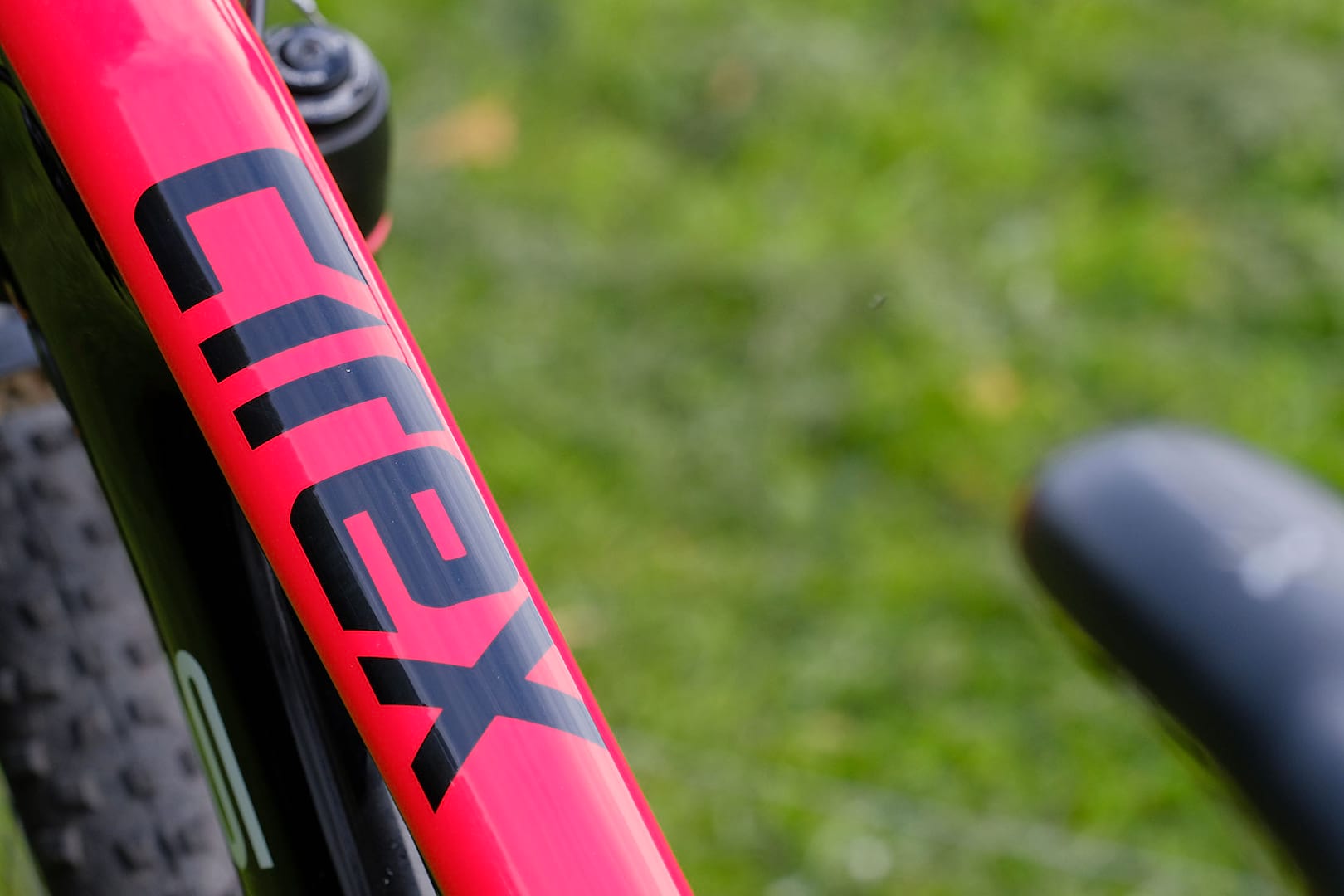
The other thing they have going for them is the Simplon Individual System. Borne from their history as a small local bike shop with a passion for giving customers what they want, this allows customers to build and configure their intended bike from a multitude of options via their website. Unlike many sales websites, sifting through the various specs, options, and weighing up the various pros and cons of each is a breeze with the Simplon system. Starting with a choice between various builds – four in this case – you then step through each part and refine it from a list of options, even down to how many headset spacers you require. As you do so the price, and weight, of the resultant bike changes accordingly. Once complete, you save (or download) the configuration and forward on to your nearest dealer who will check your build and process your order. The only thing missing is a ‘buy’ button, and I can imagine some people might be slightly frustrated at going through the motions, only to find out that you then have to contact a dealer, rather than the instant gratification of entering your credit card details in order to receive a large box from a courier a few days later.
The Bike
The Cirex 120 comes with 120mm of travel at the front and 100mm at the rear, has boosted 29 inch wheels, and is targeted at racers and those who like to put the miles in. Masochists basically, which is probably why I ended up testing this given my strange, and largely unsuccessful, hobby of endurance racing. That’s not to say though that this bike wouldn’t suit more sensible types who prefer normal rides of a couple of hours or so.
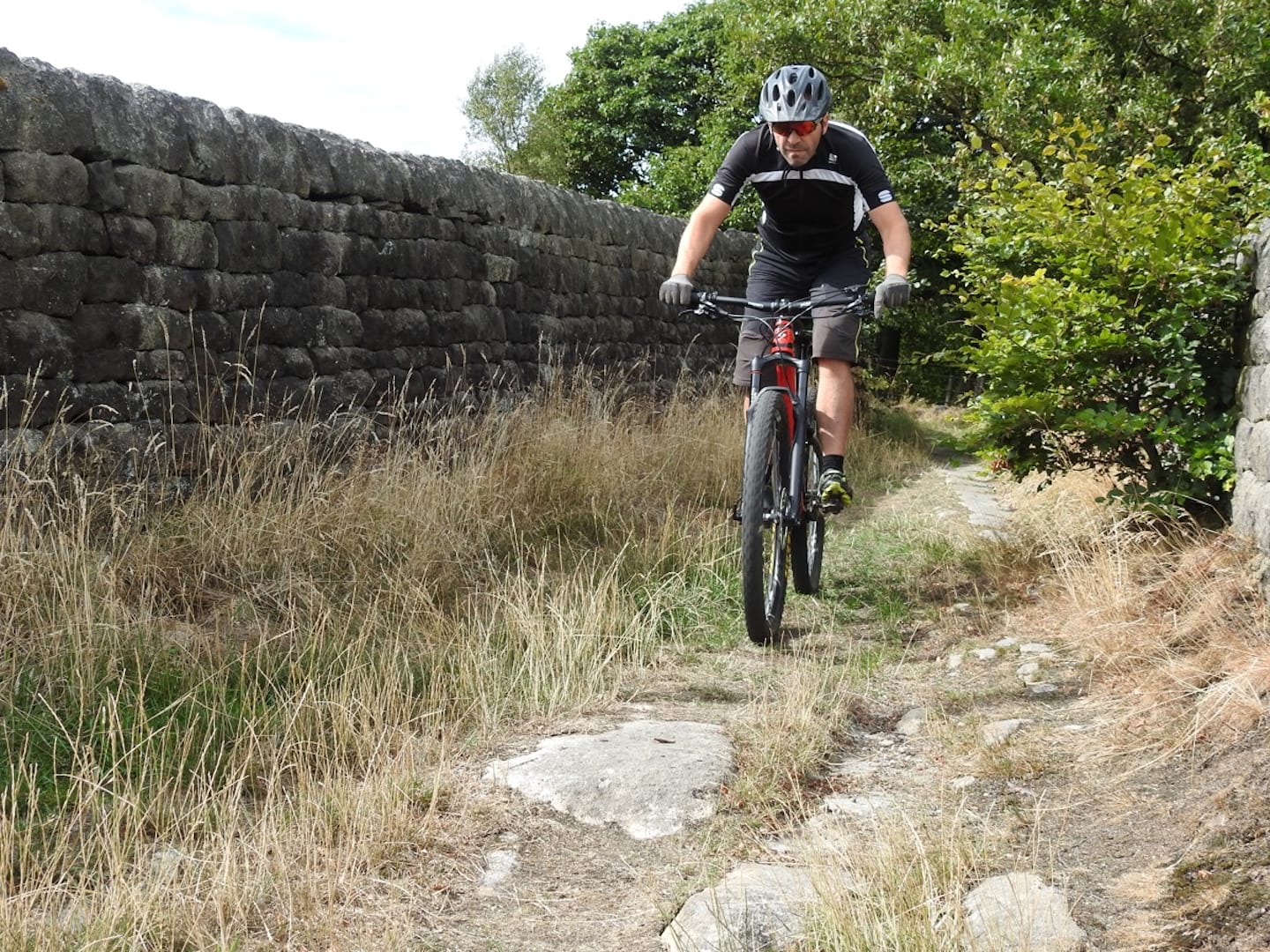
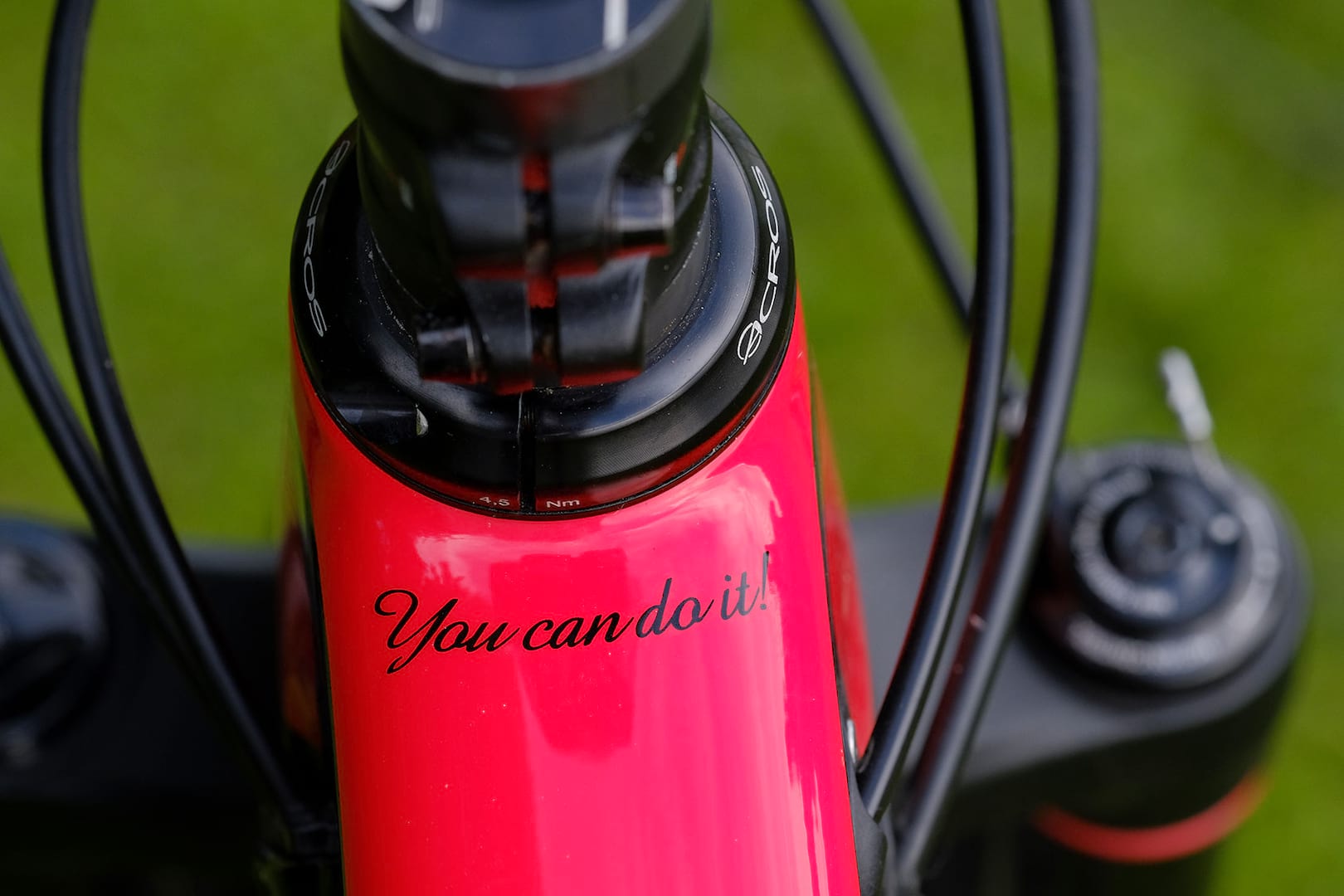
The frame comes in two colour options, red and black, or just black, and is constructed from unidirectional carbon using a Simplon specific hot-melt process to minimise resin content and resultant weight. The tube widths are scaled to the size of the frame, with the thick square profile downtube and beefy head tube and bottom bracket joints providing a stiff and stable platform for laying down the power, and an asymmetric chainstay adding extra torsional stiffness. Cable routing is fully internal as you’d expect of a bike of this price, but with a neat additional feature unique to Simplon bikes. Cable routing between front and rear triangles, and resultant rubbing, can be an annoying aspect of even high-end bikes, but Simplon has solved this problem with a patented rotating cable guide integrated with the link between the chainstay and seat tube. This keeps the rear brake and gear cables from rubbing against any tubes due to suspension flex, looks extremely tidy compared to a cable tie, and prevents any cable rattling. It’s a small, but effective addition which shows an attention to detail lacking in other comparative bike designs.
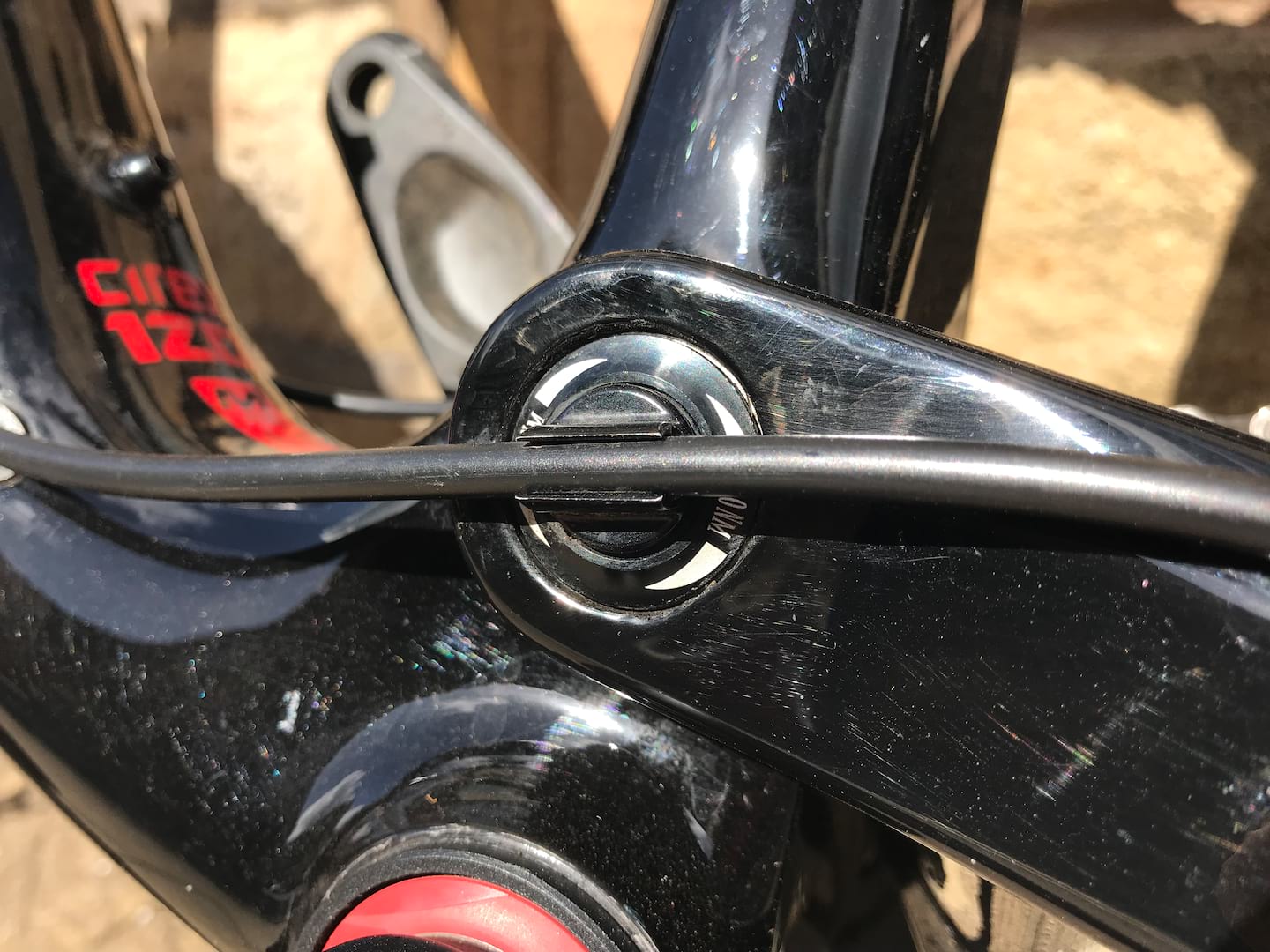
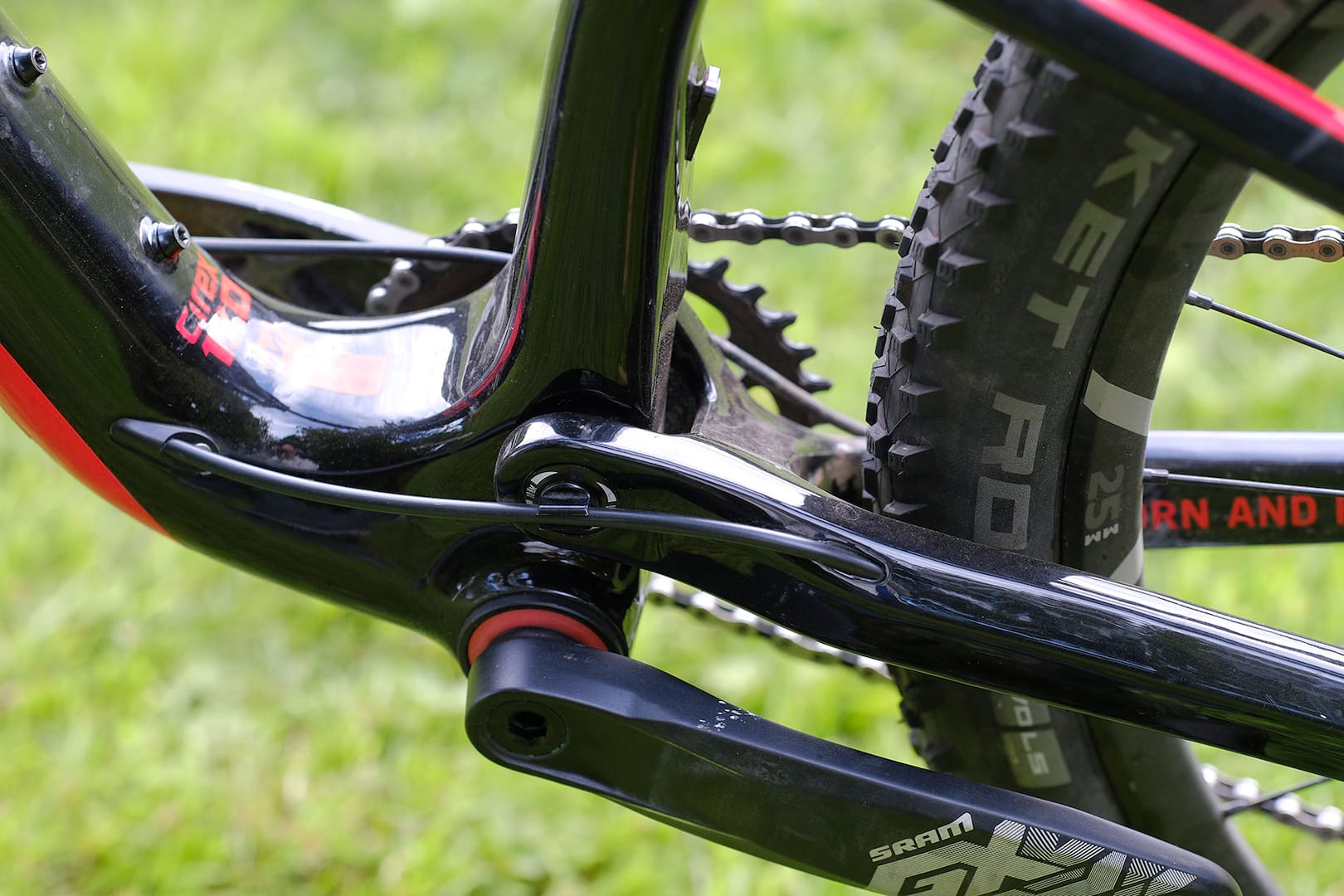
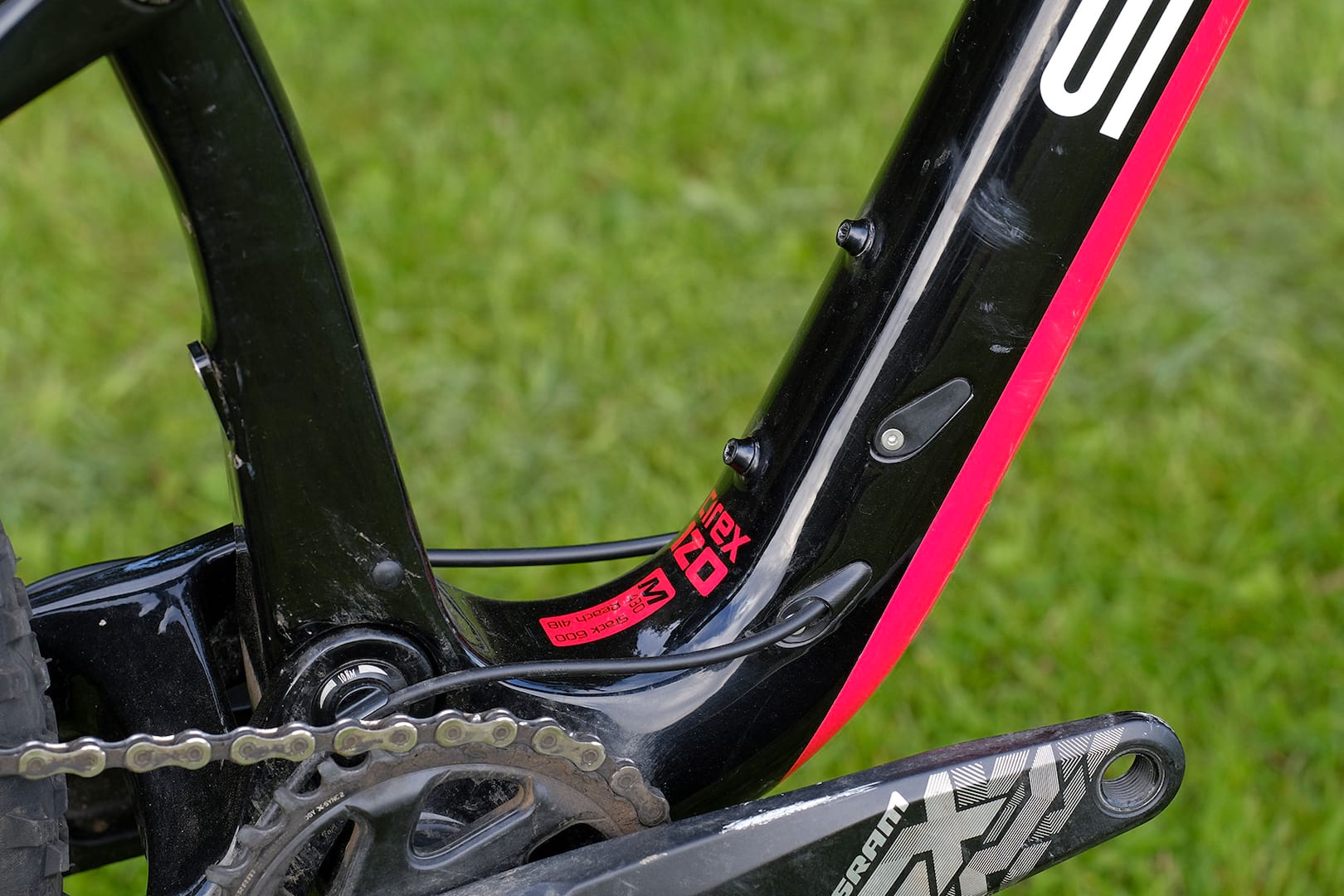
As previously mentioned, this bike bucks the trend for longer and lower geometry. The short top tube and reach – 590mm and 418mm respectively on the medium – match that of XC hardtails from a few years ago, and combined with a relatively high stack of 600mm to accommodate a 120mm fork, give a fairly short and upright cockpit. This is mitigated by the 90mm stem with -7 degrees rise (slammed obviously) to keep the actual reach similar to longer and lower bikes. Add to that the relatively high bottom bracket (340mm), you could be forgiven for thinking that this is a bike only to be enjoyed riding uphill, which it is good for, but that’s not the only string to its bow.
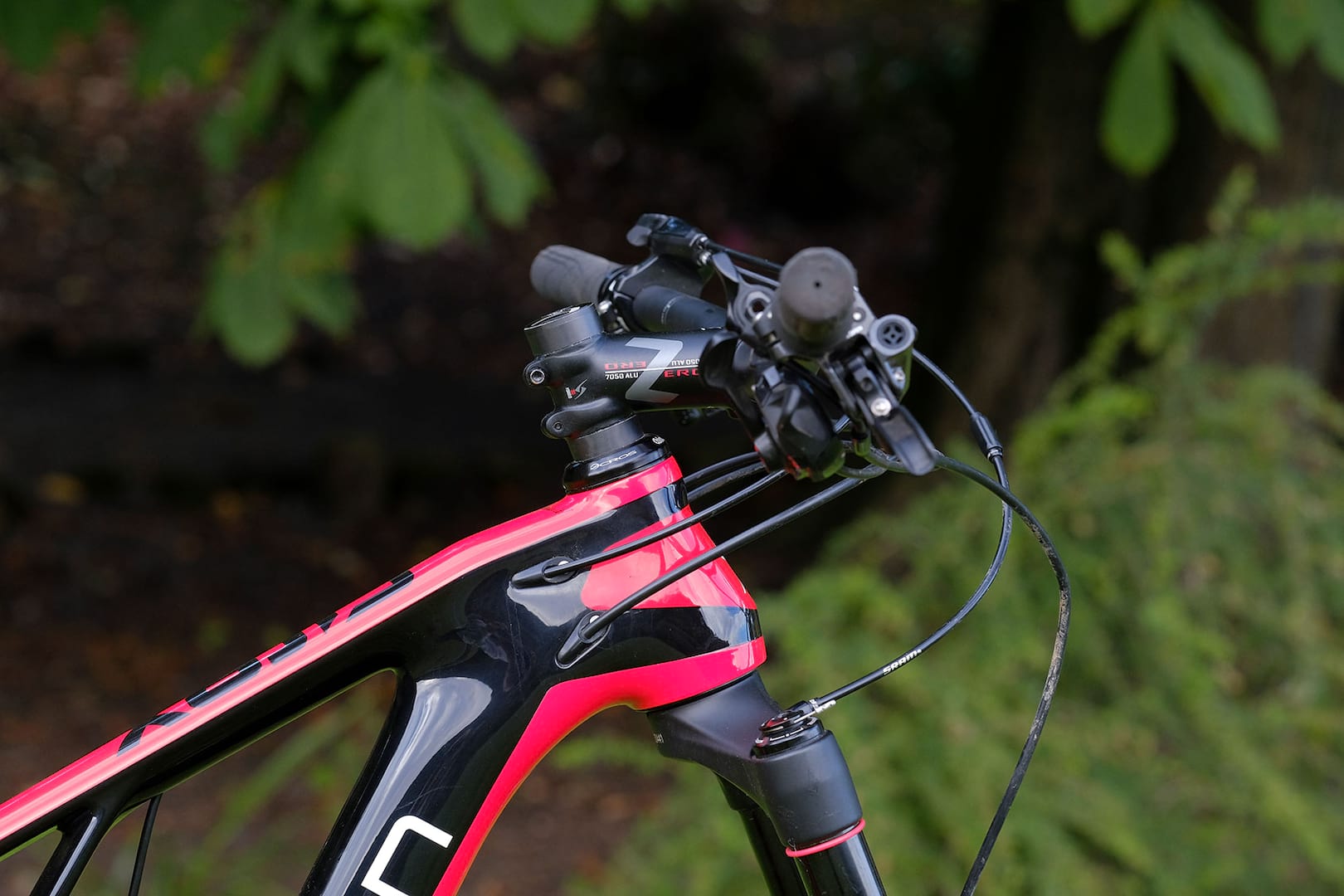
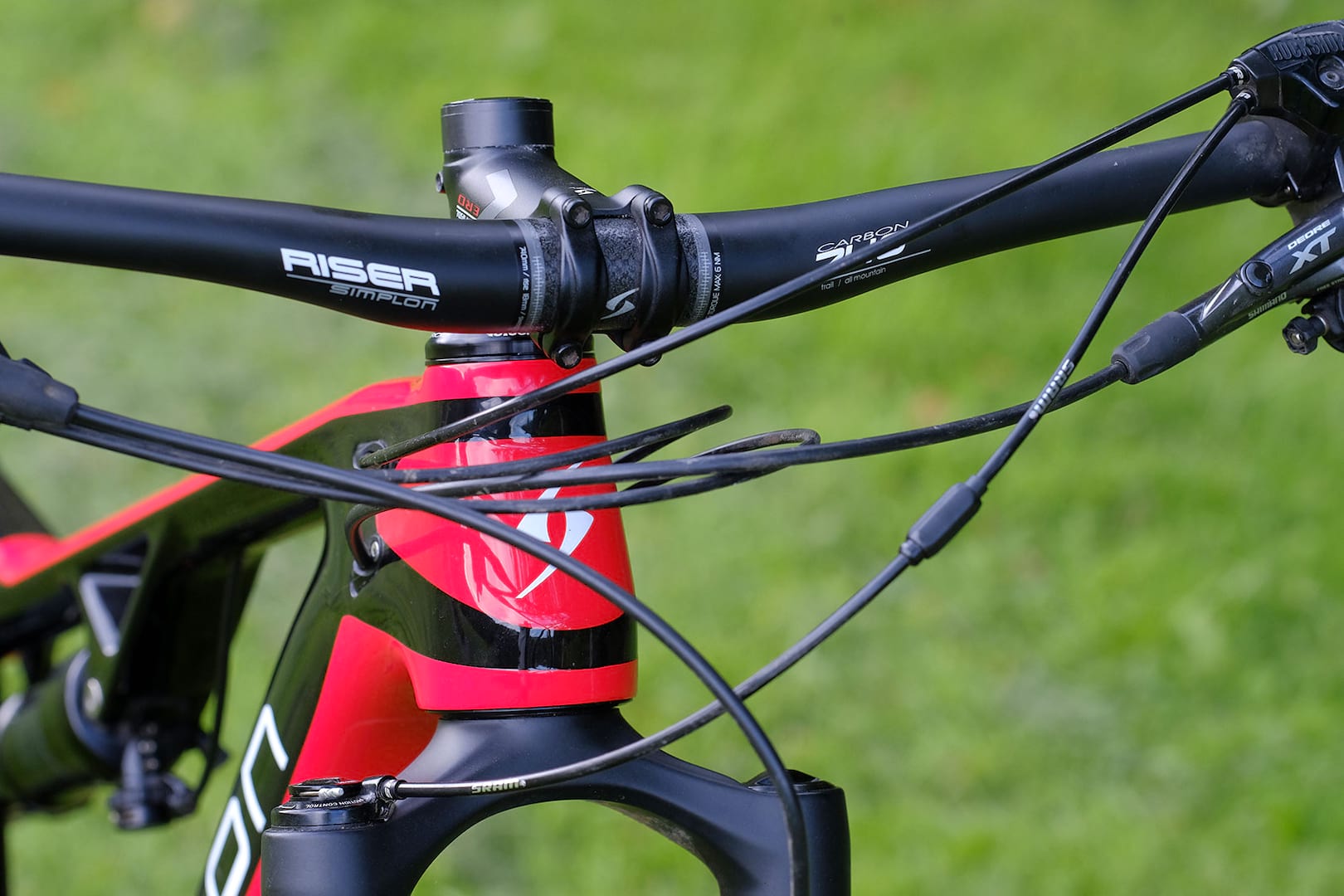
The suspension utilises a single pivot design with a twin remote lockout and in this configuration features the Rockshox Deluxe RT3 shock (145mm x 45mm) married with a 120mm travel Reba fork. If that’s not to your liking then the configurator gives you the option of a Fox Float DPS Shock with the 32 Float Performance Elite Fork, or if you want to go for a full race spec, the Rockshox RT3 Fullsprint with the RS-1 fork. The RT3 required a bit of incremental tweaking to get the set up just right. Maybe I’m an awkward weight (ie too fat!) but I found there was a fine line between having too much pressure so that it was too stiff, or not enough where it bottomed out quite easily. Once I found the sweet spot though it provided just the right balance between soaking up small bumps and absorbing big hits. It also tightens up impressively when the power is applied, especially on climbs where it keeps the rear wheel stuck to the trail. If that’s not enough then the lockout effectively turns it into a rigid hardtail at the flick of a switch, which is a great feature for tarmac or fire-roads where suspension isn’t required. Tensioners on the both the front and rear lockout cables can be used to fine-tune the compression, although even with this it still results in a binary decision between having suspension or having none when the need arises, with not much in between.
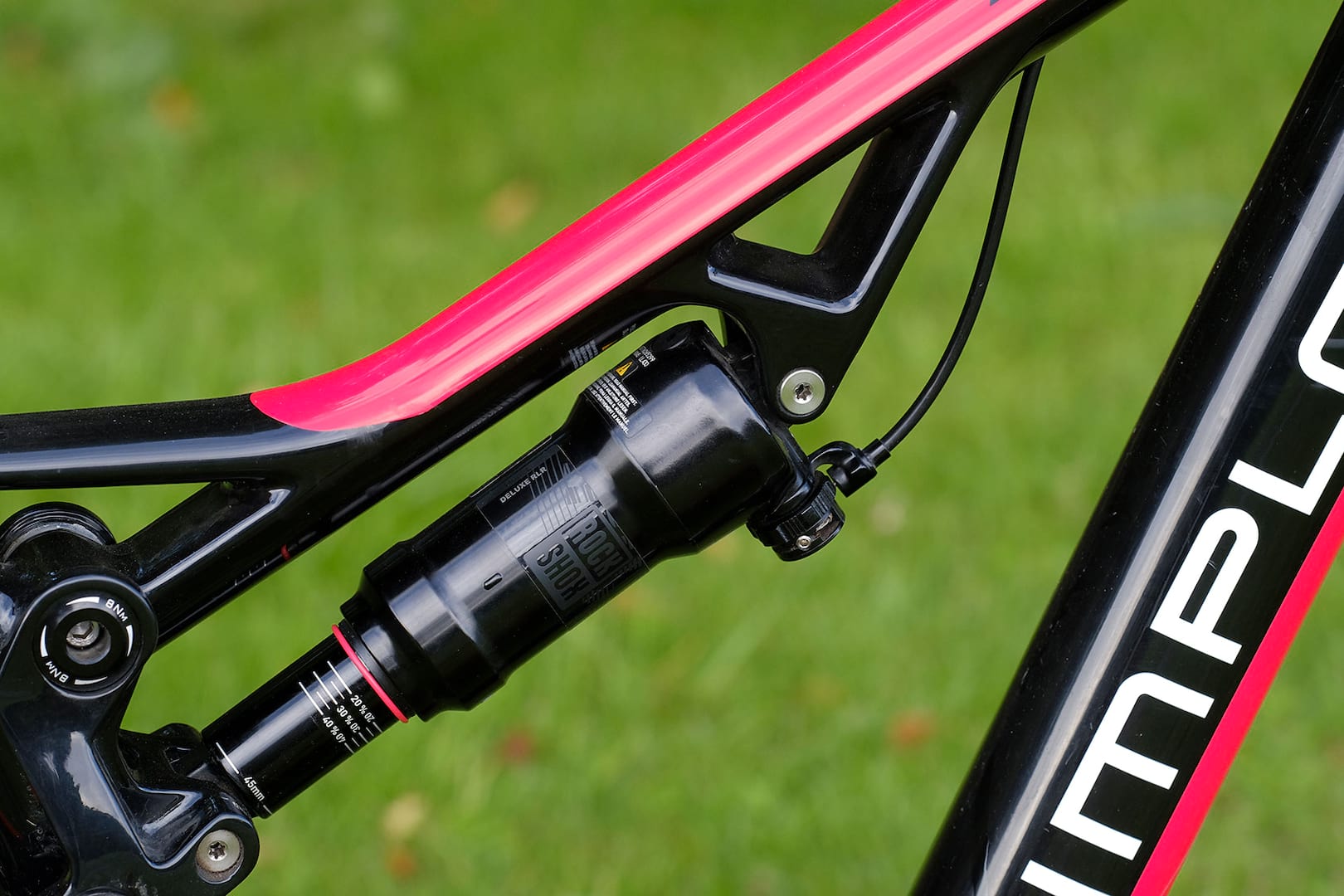
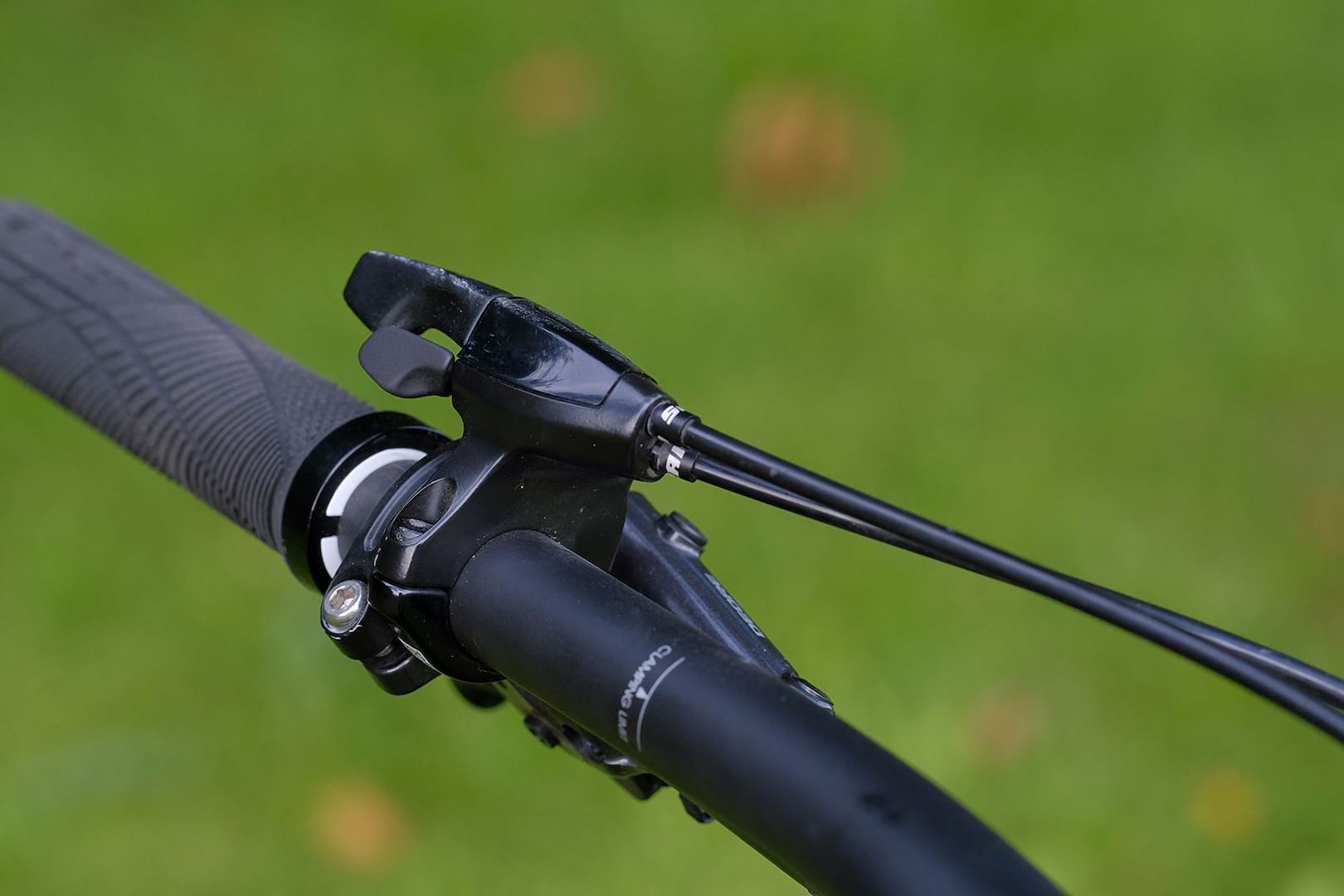
This model came with a DT Swiss XM1501 Spline 25 wheelset adorned with Schwalbe Rocket Ron Liteskin tyres. These are an upgrade on the own-branded AXM 1750 wheels, or if you prefer to spend more money, the carbon DT Swiss XRC1200 wheelset is available to choose via the configurator. The XM1501’s performed faultlessly for the duration of the test. The 25mm rim width reflects the XC nature of the bike and have a claimed weight of 1577g for the set. One weakness however is the tyres. The Rocket Ron Liteskin’s may well be super light and race-specific, but for a marathon bike something sturdier would have been more appropriate.

The rest of the bike consists of a SRAM GX1 Eagle 1×12 groupset with Shimano XT brakes. If you wish you can choose the alternatives of the X01 Eagle, XT or XT Di2, although should you opt for the Shimano options, you’ll gain an extra chainring and front derailleur. Being something of a Shimano fan, I’ve never really used a SRAM Eagle groupset, but in the couple of months I rode this I’ve become something of a convert. Not just to the huge range of gears that the 10-50 cassette provides but also that satisfying clunk when shifting which you don’t really get with Shimano gears. The build is completed with a KS Lev Integra dropper, and Simplon own brand 740mm carbon riser bars, although the lack of longer bar options may put some off.
The Ride
As you’d expect for an XC bike, this bike rides very well on the flat and uphill. On flat or undulating terrain it flies along, the suspension soaks up bumps and obstacles to the point where trail buzz disappears and thanks to the light weight of bike at 11.6kg it’s very easy to lift this over bigger obstacles such as holes or rocks. Uphill the suspension combined with the stiff bottom bracket combines to keep you moving forward with a minimum of rear-wheel slippage and for those sections where more direct power is required, the superbly effective lockout turns it into a hardtail. The only niggle was that on steeper climbs the front end becomes quite light, sometimes resulting in the front wheel leaving the ground. This required a certain amount of shifting forward and chewing the stem although it didn’t quite require sitting on the point of the saddle.
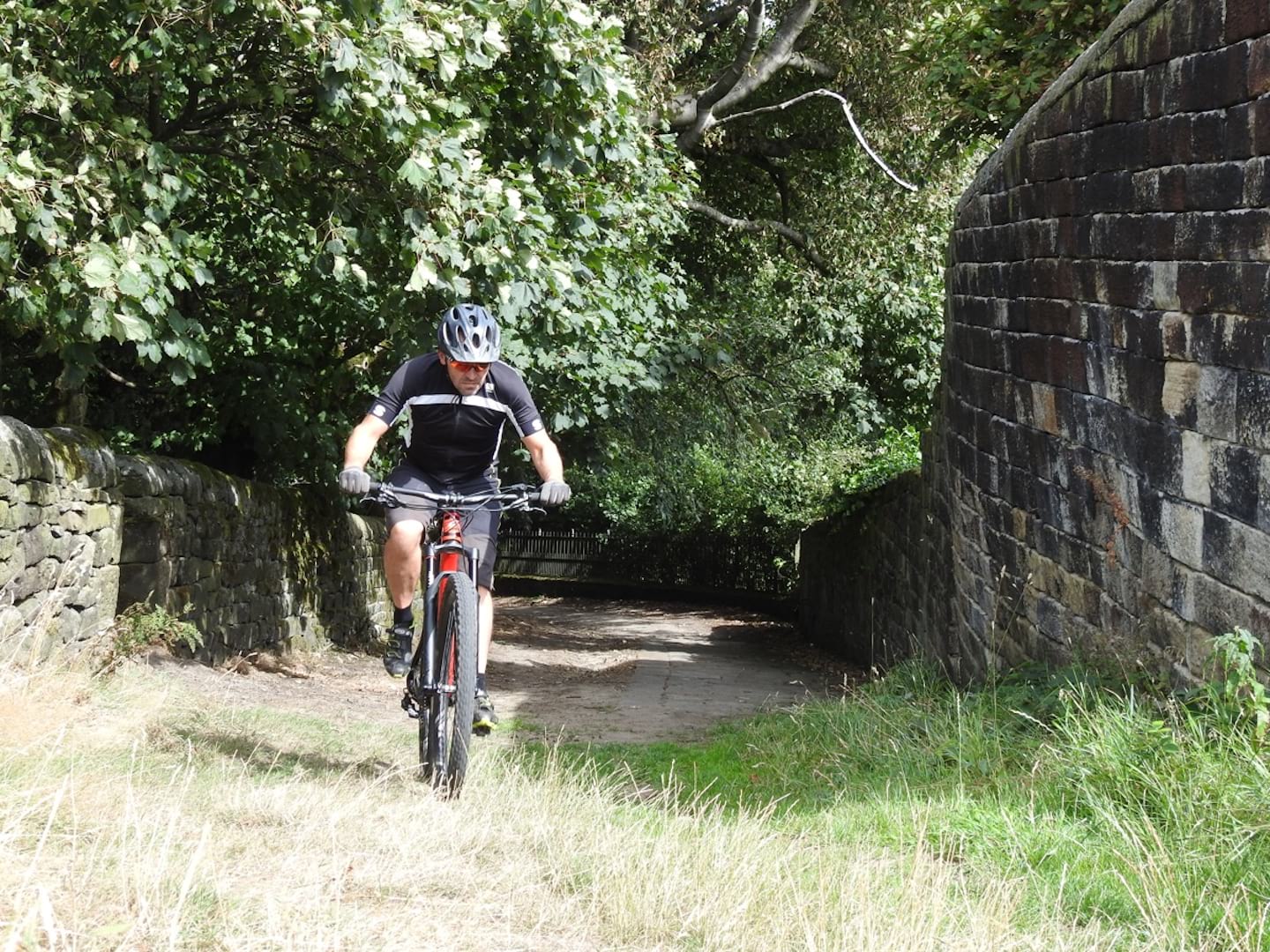
The upright cockpit doesn’t have the feel of an all-out race bike. If that’s what you’re after then something longer, lower and steeper would suit better. For longer rides or endurance riding however, this feels like the right balance between comfort and all-out speed. The long and negative rise stem compensates for the upright position, and the result is tight and focused handling on twisting trails, with a cornering ability which you’d expect of something steeper and lower.
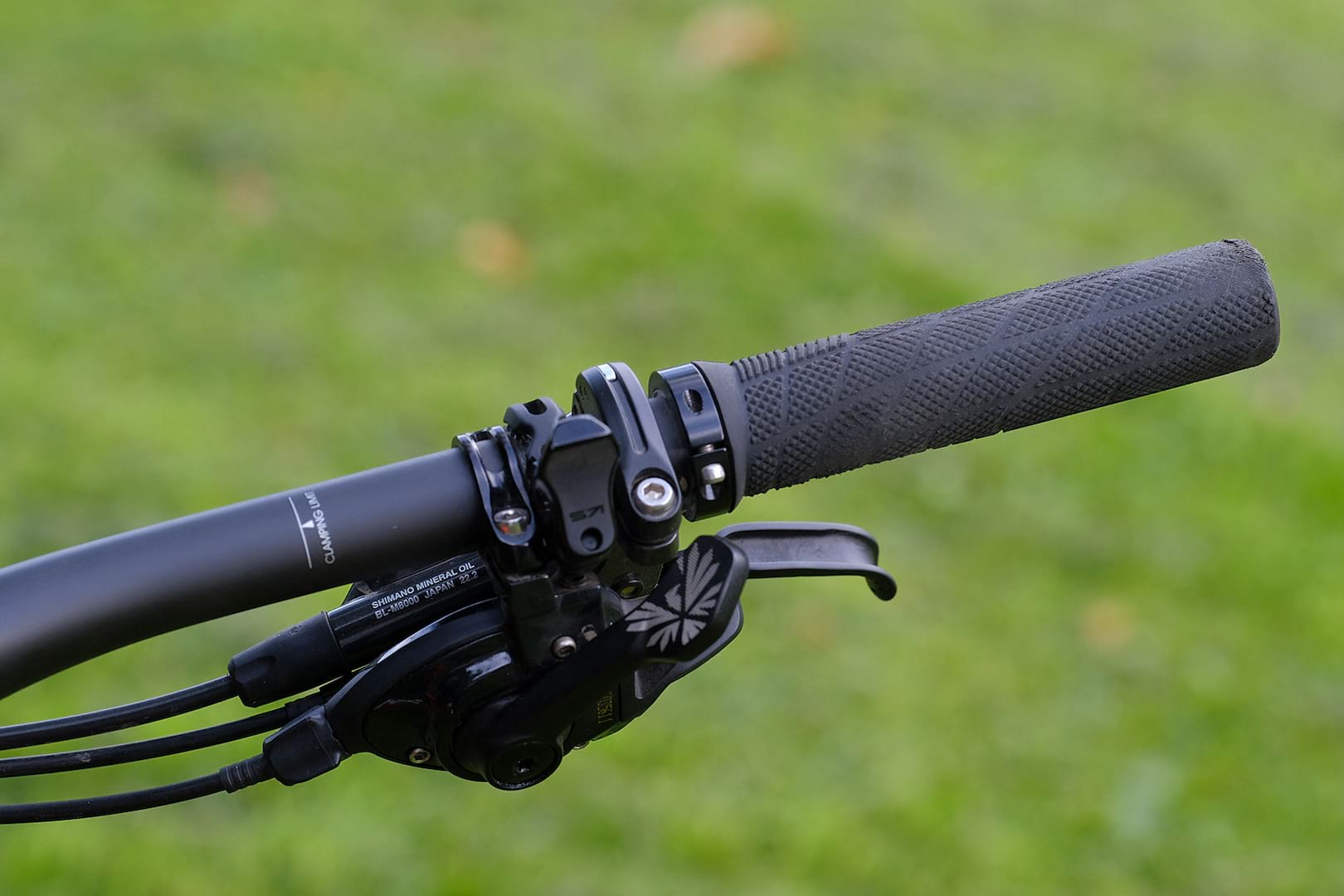
The big surprise is the performance downhill. The responsive suspension, 120mm fork, and upright position give it a stability which you’d expect from a more downhill oriented machine, lacking any buttock clenching twitchyness when descending at speed. Unsurprisingly, It’s not as capable on steep technical and rocky terrain as a longer and slacker bike, but it provides the confidence to push the boundaries where other XC bikes might have you thinking twice. Combine this with the low weight and compact cockpit, you can throw this bike around in ways that a heavier all-mountain or trail bike would have you straining something, the end result being a bike that is a lot of fun to ride.
Three Things That Could Be Improved
- Tyres. The Rocket Ron Liteskins may be ultra-lightweight, but you want something that will last longer than a few rides.
- Grips. I found these quite harsh on the hands. For an endurance bike something more comfortable would be useful.
- A buy button on the website. Simplon isn’t selling direct just now, but given they’ve developed such a great website and thought a lot about giving the customer what they want, maybe they should.
Three Things We Loved
- The speed. I shouldn’t be able to ride faster downhill on this than bigger more downhill specific bikes. Those PRs will be around for a while I think.
- The shock lockout. Instant hardtail at the flick of a switch with virtually no movement or flex.
- The cable guides. No rubbing, no rattling, no catching the cables on branches or twigs. A very tidy and well thought out solution to such a common problem.
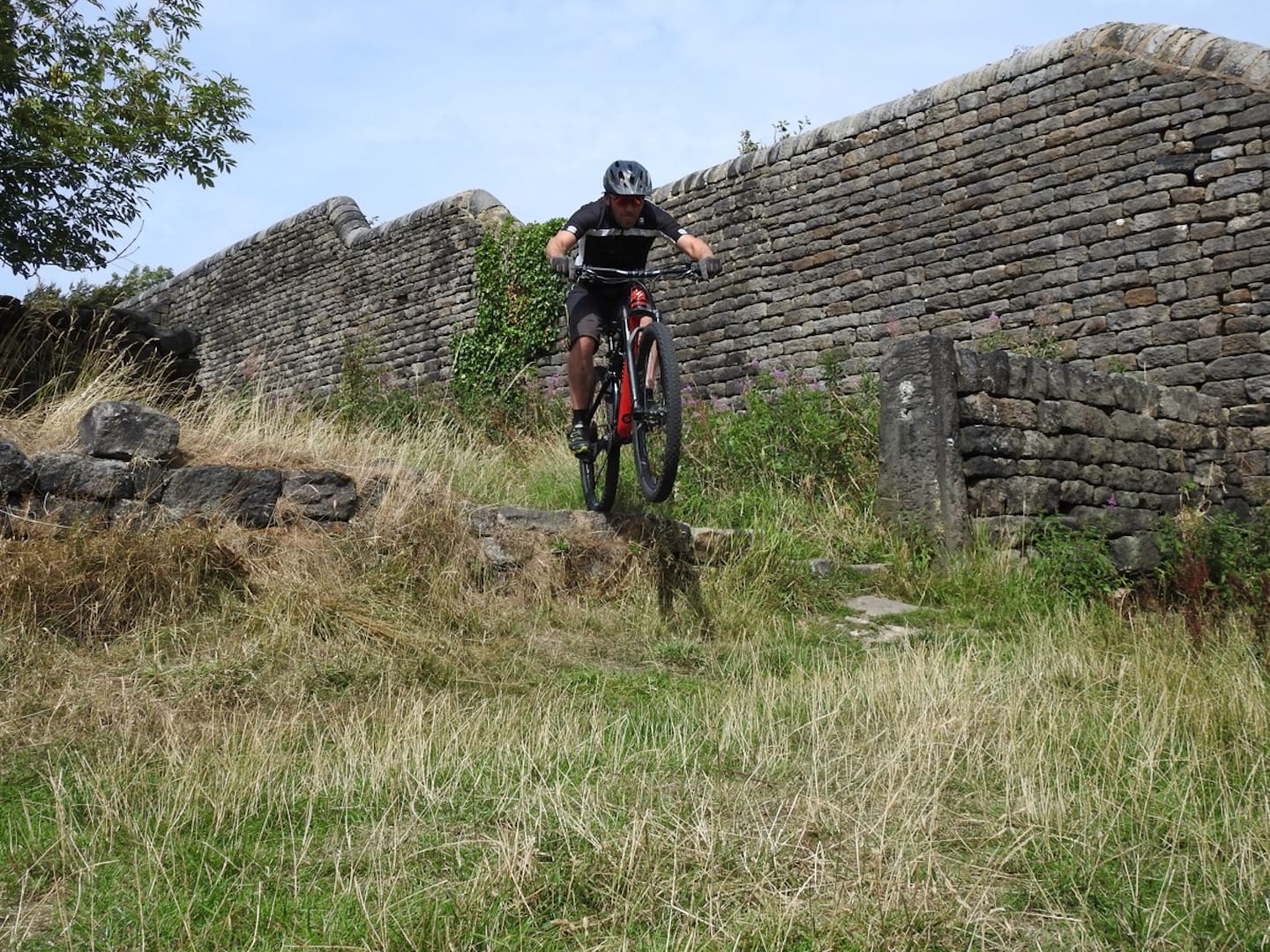
Overall
Given this bike is targeted at racers and XC riders, you’d expect it to be focused on riding fast on a variety of terrain but primarily climbs and on the flat, and it does that very well. What it also does however is ride extremely well on the descents. Uphill it will have you grimacing as it sucks you into riding faster, downhill it will have you grinning. If you’re an XC race whippet who is wary of fast descents, or a gnarr-shredding enduro type who wants to go faster and longer uphill, this bike will suit you equally well. It’s a superb all-rounder, and whilst it’s not cheap, for many riders it’s the only bike you will need. I’m going to miss it.




